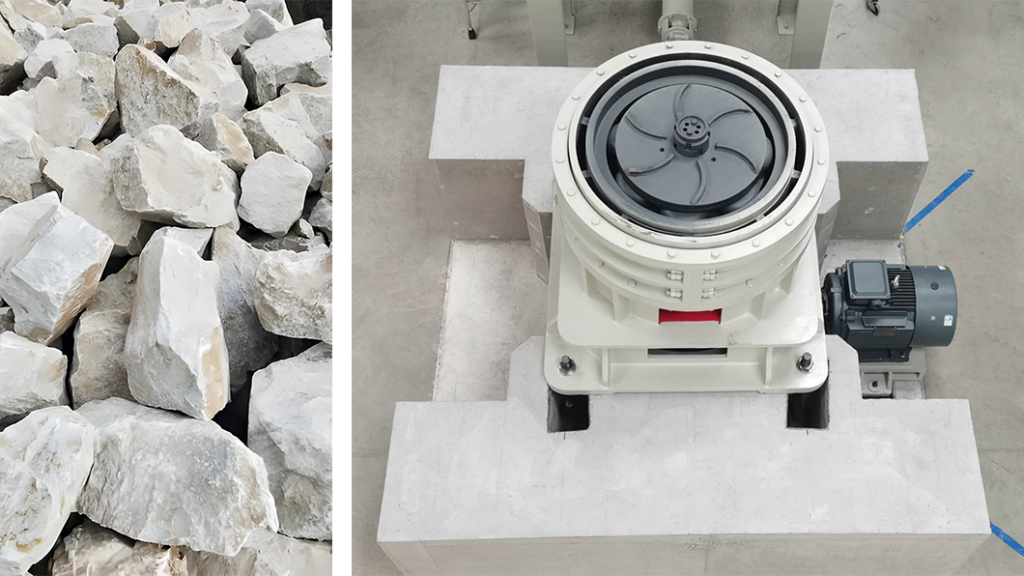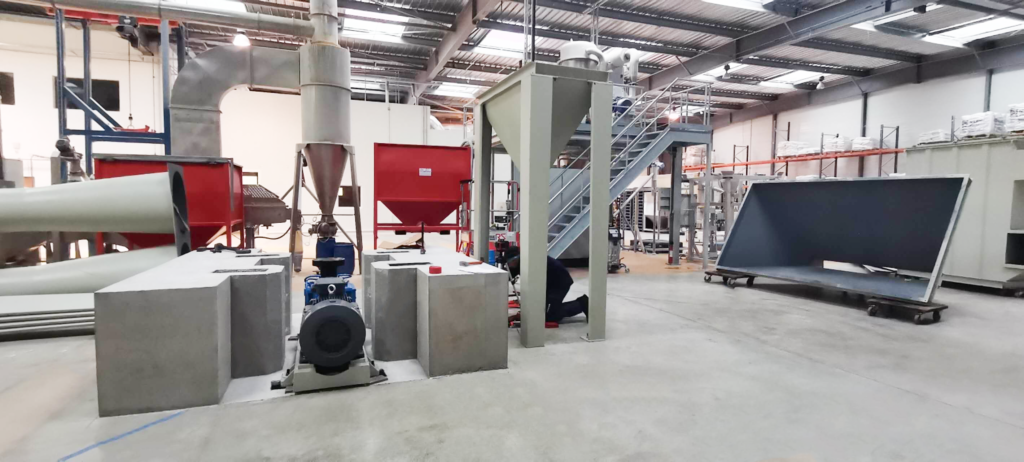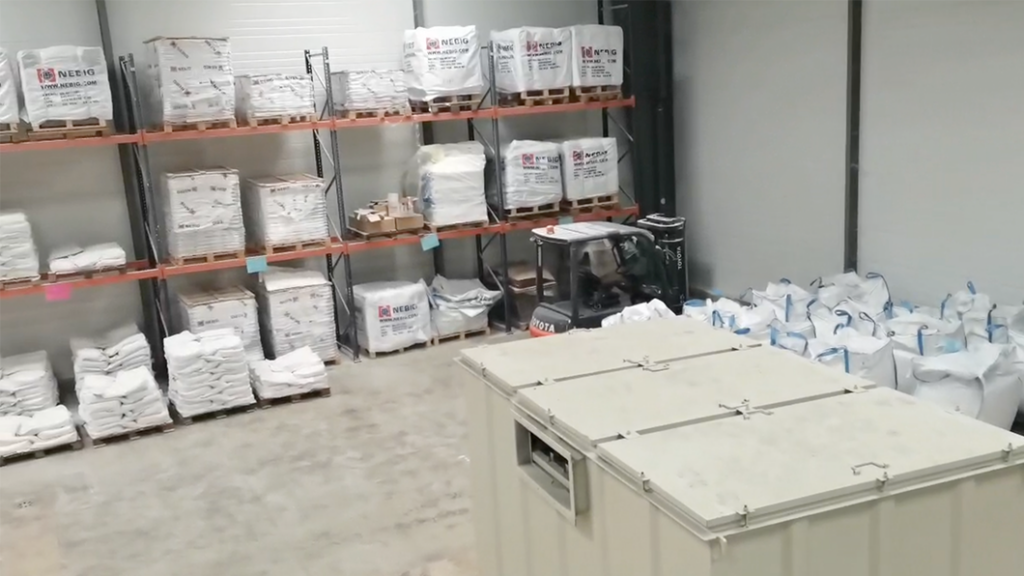The calcium carbonate grinding industry in France has been significantly enhanced with the introduction of Clirik’s HGM80 ultra fine powder mill. This advanced mill has not only increased production efficiency but also improved the quality and consistency of the final product, making it a preferred choice for local manufacturers.
The HGM80 mill operates on a unique roller press grinding principle. Large blocks of material are first crushed into smaller particles by a hammer crusher and then sent to a storage bin via a hoist. The material is then evenly fed into the upper part of the rotating disc in the host machine through a vibrating feeder and an inclined guide pipe. During operation, the main electric motor drives the main shaft and the rotating disc through a reducer, and the roller pins on the edge of the disc drive dozens of rollers to roll in the grinding ring raceway. The material is scattered to the periphery under the action of centrifugal force and falls into the grinding chamber, where it is impacted, rolled, and ground by the grinding ring. After being ground through three or four layers of ring channels, the material is turned into a powder. The high-pressure fan draws external air into the machine and carries the crushed material into the classifier.

The high-speed rotating impeller screens the material, with coarse powder falling back for re-grinding and fine powder entering the cyclone collector with the airflow. The dust falls and is discharged from the bottom discharge valve as the finished product. A small part of the fine dust enters the dust collector with the airflow and adheres to the surface of the filter bag. The pulse valve controls the high-pressure airflow to spray from the inside of the filter bag, and the dust adhering to it falls off due to the sudden vibration of the filter bag. The conveyor at the bottom then sends the collected fine powder material for finished product packaging. The filtered clean air is finally discharged from the silencer outlet.
One of the most significant advantages of the HGM80 mill is its energy efficiency. It consumes significantly less power compared to traditional grinding mills, reducing energy consumption by up to 30%. This not only helps French manufacturers reduce their operating costs but also aligns with their environmental sustainability goals.

The durability of the HGM80 mill is another factor that has contributed to its popularity in France. The mill rolls and rings are made from special materials that enhance their longevity. These components can last up to 2-5 years, which is significantly longer than those in impact crushers and turbine mills. This extended lifespan reduces the need for frequent replacements and maintenance, ensuring continuous production and maximizing productivity.
Safety is a critical aspect of the HGM80 mill’s design. It features a unique construction with no rolling bearings or screws inside the grinding chamber, which eliminates the risk of common mechanical failures. This design ensures that the mill operates smoothly and reliably, minimizing the risk of accidents and downtime.

The HGM80 mill also addresses environmental concerns. It is equipped with a pulse jet dust collector and a muffler, which effectively control dust emissions and noise levels. This ensures that the production process is environmentally friendly and complies with the strict environmental regulations in France.
The adoption of Clirik’s HGM80 ultra fine powder mill in France’s calcium carbonate grinding industry has had a profound impact. It has not only improved the efficiency and quality of production but also set a new standard for safety, reliability, and environmental sustainability. As the industry continues to grow, the HGM80 mill is expected to remain a key driver of innovation and growth.
Share: